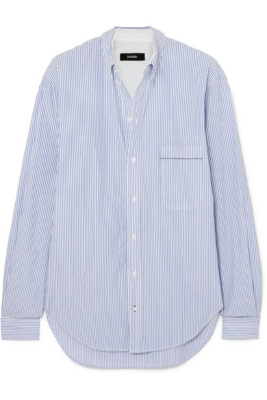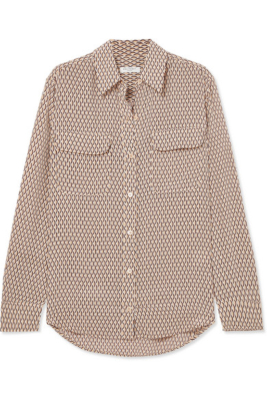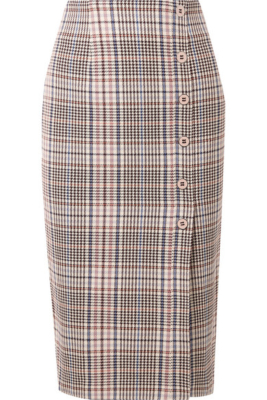“Ambiguously defined” is what Wikipedia states about business casual, stating that, “it’s ‘more casual wear than informal wear but less casual than smart casual”. Well that makes things about as clear as… mud!!!
Gimme some tips, gimme some rules – ‘ambiguously defined’ is the last thing I want to hear when I need to understand something fast and I’m sure you’re the same. Read on for business casual outfit ideas a plenty.
Do Not Despair
Thankfully Wikipedia is not the only source of business fashion information! As a personal stylist with a few years of corporate experience under my belt, I am going to do my best to demystify the beast that is business casual dressing (a.k.a ‘biz cas’ pronounced ‘biz cazh’).
One Size Does Not Fit All
When it comes to business casual (or any style in general), the most important thing is that you find the clothing styles that feels right on you – not strictly following what I tell you just because I am a qualified personal stylist. I’m here to help, but you’re the one who has to feel authentic in what you wear.
Secondly, what is deemed appropriate depends on your industry, your company culture and your position. For example, if you’re a leader in your organisation you’ll likely place greater emphasis on a professional personal brand when choosing your outfits and may not feel comfortable wearing denim to work, even for occasions deemed ‘business casual’. However, you may be happy for your junior staff members to wear denim. If your company is progressive and innovative there is likely to be greater acceptance of more fashion-forward outfits. A more conservative organisation may call for a more traditional style of work dressing. A rule of thumb – in the first week in a new job be sure to cover up your shoulders, opt for formal trousers or knee length skirts and observe. You will get an idea of how relaxed or strict the dress code is and you can adjust your outfits accordingly.
In addition to industry, think about what is on for the day. While power dressing today is no longer about emulating your male colleagues’ looks, women still feel that different types of outfits get different results.
A friend of mine Steph, a senior specialist in the HR department of a major telecom company says, “If I’m in technical meetings, I tend to wear pants because I feel I get taken more seriously when I dress less girly. If I have meetings with executives I’ll try and emulate their style a bit because I’m usually meeting them to convince them on something, and the more they like me, the easier it is”.
Business Casual Defined – Denim Included
The business casual dress code typically means you can be more relaxed than traditional corporate suiting, but you still need to look smart and work-appropriate. For men this is relatively simple – jeans or pants with an open-neck shirt or polo and an optional blazer or sports-jacket. For women, business casual outfits is more of a grey area, so let me try to help.
Unless your company policy clearly states otherwise, business casual for women usually includes denim – with skirts, jeans, jackets given the green light. As a general rule, your denim should be free of rips, tears and significant distressing. Darker denim washes are best – either indigo or black denim are ideal.
Of course, you don’t need to opt for denim. Pants, dresses, skirts and tops are all great business casual options. Footwear can be flat or heeled, depending on your preference.
Business Casual No No’s
The main consideration is whether your outfit is ‘work appropriate’. Typically this means:
- Not too short or sexy – no micro-minis, hot pants, crop tops, deep plunging necklines, bodycon lycra dresses or thigh high splits!!
- Not too ripped, distressed or worn
- Not too ‘undone’ – you need to look neat, tidy and pulled together – not sloppy – so take care to tuck yourself in and pick up an iron if need be (or if you’re like me and hate ironing, opt for crinkle-free fabrics!)
- Not active wear – tracksuits included (unless cleverly styled with blazer & heels but even then you might be entering the grey zone)
- No sneakers unless they’re a super-stylish leather pair (or unless your workplace has a super cas. vibe).
IDEAS FROM A PERSONAL STYLIST for Business Casual Dressing
For us gals, some business casual outfit combos might include:
- A blazer, a t-shirt or cami tucked in to dark denim jeans or a denim skirt (not too short) with a block heel pump or point-toe ballet flat.
- A flowy dress worn under a leather or denim jacket, paired with ballet flats or a heeled pump or sandal.
- Wide-legged pants, a t-shirt, blouse or button-down tucked in and a point-toe heel or flat.
Of course, you need to ensure whatever business casual outfit you choose works for your body shape. If you’re unsure of your shape That Style Chick style app can help you work it out.

Image: fashionssories.com
Build a Capsule Business Casual Wardrobe
Chances are you already have pieces in your wardrobe that work well for business casual dressing – blazers, dark wash denim jeans, classic jumpers and cardigans, a button-down shirt or blouse with short or long sleeves, a pair of solid coloured slacks… chances are you only need to get an additional piece or two to complete your business casual capsule wardrobe. It’s really about creating a repertoire of ‘go-to’ outfits that you can build with these pieces, to make your life easier.
I suggest starting a business casual capsule wardrobe with the following:
6 Tops (4 in solid colours and 2 with a print)
You can wear formal or casual shirts, polos and sweaters. Avoid sheer fabrics and busy details.
You can select from a variety of colours and even go for a print. Be mindful of what your office is like – in some an animal print would be acceptable, while in others it wouldn’t match the environment.






Images: Net-a-Porter
4 Bottoms
Choose trousers and skirts that are not too form-fitting. Opt for knee-length skirts. Avoid any super-loud prints, like extra-bright florals which can be polarising. If your office allows jeans, select a pair in a darker wash, with no rips or distressing.




Images: Net-a-Porter
2 Dresses
I’m a big fan of dresses because it makes choosing an outfit so much easier! Midi length dresses with sleeves are best. My top pick is a wrap dress. Sundresses, or spaghetti-strap dresses are not as appropriate for the workplace.


Images: Net-a-Porter
2 BLAZERS/Jackets
While you should stick to classic and formal design, the fabric itself can be informal and you can play with interesting colours. My main tip here is to stay away from fashion fads – cropped, bomber, or kimono jackets are best left for other occasions, unless you work in a very progressive company. A great blazer (see My All-time Style Hero post) and a quality leather jacket are my recommendations.


Images: Net-a-Porter
2 Pairs of Shoes
Find a good pair of pointed-toe kitten heels or block heels and a pair of ballet flats in neutral tones that work with all your work outfits.


Images: Net-a-Porter
A Structured Bag
A structured bag will give the impression of someone who is pulled together and organised. It’s also great for transporting your laptop. Choose neutral or deep colours that work well with the palette of your wardrobe.


Images: Net-a-Porter
Casual Fridays
A lot of offices have the tradition of casual Fridays. It might be tempting to get really creative and fun with your outfits after a week of strict rules, but think of this day as a slightly dressed down business casual. Denim is acceptable, but don’t pair it with crop tops or t shirts with controversial slogans. While we are on the subject, why not build an outfit around a denim skirt? You can use any of the tops you have selected for your capsule wardrobe, or pair the skirt with a plain solid coloured tee and a jacket.


Images: Net-a-Porter
While there are some general rules about business casual dressing, you also have to consider your body shape and your colouring. Need some help tailoring the rules to yourself? Download That Style Chick app and get a free style consult!

